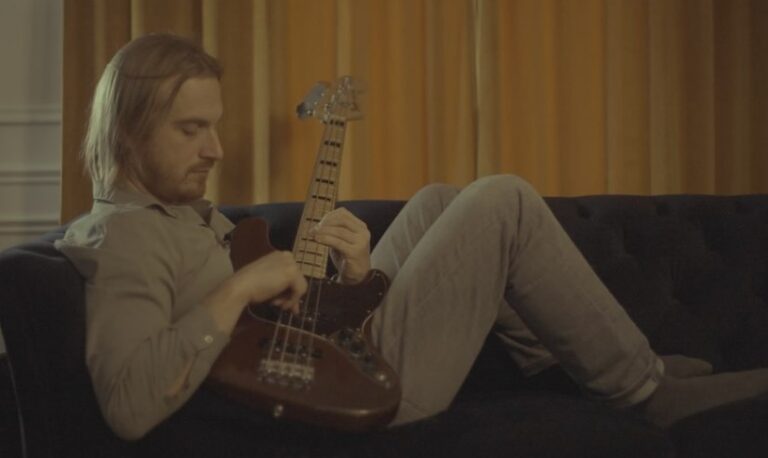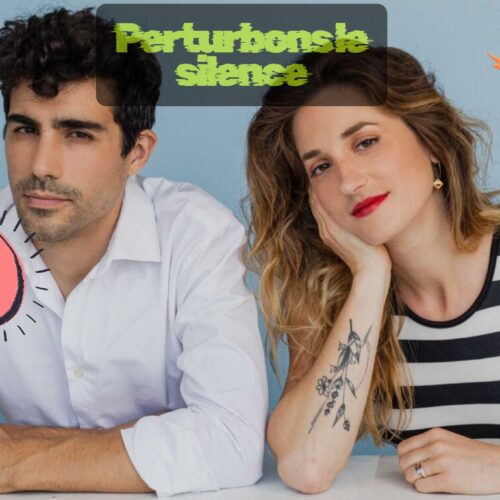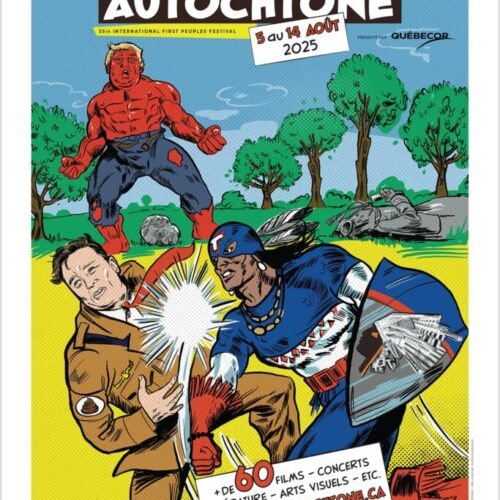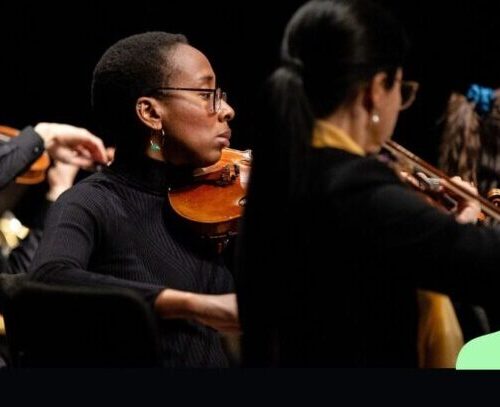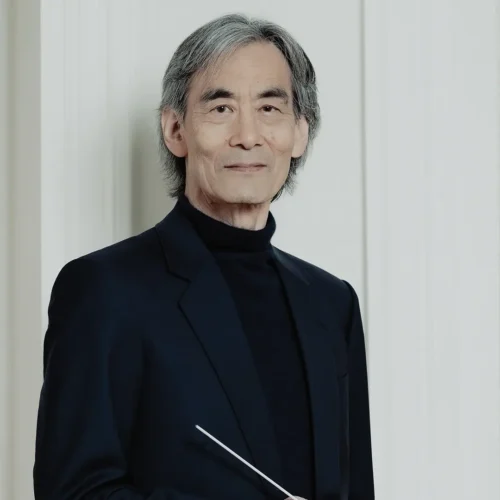Additional Information
Critique Love, aka Antoine Binette-Mercier, appears in a dark and menacing epic: the album Critique Love, whose first single “Bone White Dust” has already been circulating for some time, accompanied by an apocalyptic video by Jimmy Genest Pettigrew. Only the angelic, ethereal voices of Lisa Kathryn Iwanycki and Frannie Holder bring light and salvation.
A hypnotic, film noir album with subtle electro tinges and well-crafted violin and flute arrangements, an album that ratchets up the tension and transports us back to the tear-gas-fogged 60s and 70s. With his deep spoken/whispered voice, he sometimes recalls the deep voices of Gainsbourg or Cohen… in a diving suit. Percussion plays a key role throughout the opus, and the female vocals stand out for their contrasting gentleness, freeing us from the atmospheric heaviness that fills us with a slow, sure feeling of anguish.
Marilyn Bouchard met Antoine, who also produced and arranged the show. For PAN M 360, our contributor interviewed him after his Montreal Salon Show on April 15 … in a real salon.
PAN M 360: What were your inspirations when creating the album?
Antoine Binette-Mercier: I’m very interested in the surreal world, and I wanted to do a rock project with a very 60s-70s feel. I listened a lot to Lee Hazlewood and also Jonny Greenwood. I’m also very interested in orchestral composition and chromaticism. Looking for harmonies that grafine, that go towards Bernard Herrmann. We live in a diatonic world, so I wanted dissonance, in a context that’s soft and romanesque. The music always comes first, then the lyrics.
PAN M 360: Where do you come from, musically speaking? Tell us a bit about your evolution.
Antoine Binette-Mercier: I’m currently finishing my master’s degree in music composition on a modern approach to Romantic and post-romantic music, marked by ultra-chromaticism. If you listen to Mahler or Wagner, the chromaticism is so advanced that you’re no longer even in the tonal system, it’s almost atonal. Also, I listened to way too much Pink Floyd in my youth haha! A bit of Rush too..Gentle Giant. I’m not a big fan of masturbatory music where you get lost in the intellectual side of things…everything has to start from emotion.
PAN M 360: How long did these compositions last?
Antoine Binette-Mercier: Hey, I’m embarrassed, but I’ve done it in ten years haha! It all started when my good friend Julien Sagot (Karkwa) wanted to give it a go with his second album, Valse 333, and he really trusted me and said: “Hey, we’re doing it together!” So I came on board as co-producer, and for a year we worked on his album in a direction we’d worked out together. We tried to break down the boundaries (there’ll be no kick on 1 or snare on 2-4, etc.). And when we finished the process, that’s when I got the ambition to launch myself into this creation, to push it all further.
PAN M 360: Your music is very cinematic: are you inspired by films, images or paintings?
Antoine Binette-Mercier: Yes, absolutely! The films of Hitchcock and Tarantino were major inspirations for the project. I’m also very interested in Salvador Dali. Surrealism is very close to me.
PAN M 360: Where does the name Critique Love come from?
Antoine Binette-Mercier: The name of the project comes from “critical paranoia”, an inspirational technique based on Dali’s use of the subconscious in creation.
PAN M 360: It’s clear that you’re not afraid of moving into darker atmospheres. Is this something that feeds your creative work a lot?
Antoine Binette-Mercier: My poetry is dark, and I wanted to deal with more difficult subjects. I like that, to work on themes that are on the border between happiness and despair. To find and work on that fine line that separates the two worlds. It’s beautiful and tortured at the same time, with a touch of the apocalyptic. I like to strike a chord and get the feeling that it’s the apocalypse, but with serenity and a smile. I like to find the precise point that cuts through.
PAN M 360: The contribution of percussion stands out as one of the album’s main links. Was it a choice to highlight them?
Antoine Binette-Mercier: Basically, I’m a percussionist, that’s what I studied. And when I composed the album, I had the skeletons of my songs and the first outside collaborator who joined in was Robbie Kuster. I’d recorded the drums myself and had a pretty clear idea at the time, but his drums were so good and I was so impressed that it kind of…pushed the production to another level. It gave the cue that the bass could do this, the strings could go there, etc…. It was important to me that nothing was standard…there’s so much music being made right now, I wanted my music to be relevant.
PAN M 360: We sometimes hear influences bordering on Sigùr Ros. Do you listen to any of these artists?
Antoine Binette-Mercier: I listened to a lot of them around 2008-2010.
Antoine Binette-Mercier: I listened to a lot of it around 2008-2010.PAN M 360: On the other hand, influences from the 60s and 70s and old opera are also present, with the guitar texture à la Nancy Sinatra, is this another world that helped shape you musically?
Antoine Binette-Mercier: Yes, completely! Lee Hazlewood, Nancy Sinatra’s composer, is a major influence for me. I listened to him a lot. I also listened a lot to Nino Rota, Ennio Morricone and all the spaghetti westerns!
PAN M 360: Your songs seem to take us on an epic journey. Do you see it as such?
Antoine Binette-Mercier: I see each of my songs as a sculpture, where I remove the superfluous and refine, at each stage, trying to find solutions to the riddles of arrangement. I need to find things, often by removing others. It’s my own epic, but it can be a bit adventurous haha!
PAN M 360: What’s next for 2025?
Antoine Binette-Mercier: “Comme avant” and “Edge’s Line” are the next singles to be released, we’re releasing them both at the same time. They will also be accompanied by visuals by Jimmy Pettigrew. There’s also a show coming up at Madame Wood on May 26.
